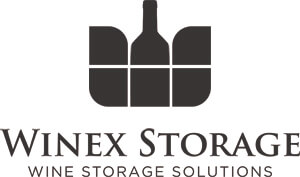Whether you’re a virgin to the wine collecting scene or are just starting to build up the collection. The 2 most important things for any wine collector to consider are:
- How to store your wine?
- Where to store your wine?
How to store your wine?
For the newest of wine collectors, the way that the wine is stored may not have come to mind. Most people may think you can just keep up right in a cupboard. Some of the more observant collectors might say lay it on its side in a cool climate. The reality of storing wine is in fact a lot more complex than this if you are to do it right for a long period of time. In the short term it may be acceptable, say If you are keeping a bottle of wine in the cupboard that you bought last Sunday for a dinner with the in laws on Thursday night you probably won’t have any problems. But if you are attempting to age the wine over a couple of years you may run into a few problems regarding the taste.
Angle
Does the angle you store the wine really matter? Well it really depends on what your goal is. Most wine collectors display wines in a way that it reflects their taste and ensures proper preservation of their wines. Bottle orientation can be a form of art, but it is important that you keep in mind proper storage guidelines.
There are 3 possible ways to store the wine:
- Horizontally – Ideal for long term store
- Vertically – Ideal for short term storage of wines consumed young
- Tilted at a slightly upward angle – Visual appeal, requires periodic rotations
Horizontal wine storage is the ideal way to store your wines in wine racks. It will prevent wine from unwanted contact with air or air pockets by keeping the cork moist and swelled. Sediment will fall to the side of the bottle, preventing spoilage when pouring wine. This option is good for long-term storage and allows full visibility of the wine labels. You can buy simple horizontal, versatile, adjustable wine racks for an affordable price, and you can add more racks easily if there’s a need to.
These wine racks are can be made from wood, metal or strong plastics. They can be placed on the floor, mounted on the wall, or used on tabletops or countertops. It really depends on what works for you.
Storing wine bottles in a vertical position will provide easy viewing of the bottle labels, but it will dry out and shrink the corks. If this happens, air will get into the bottle and cause wine spoilage. The cork will crumble into your bottle when you try to remove it, thus compromising your wine’s quality. Storing wines vertically is preferably used for short-term storage or dining occasions. Young wines are the most preferable in this situation.
The last way to store wines is in tilted position. Avoid buying tilted wine racks as they can cause the corks to dry out or allow sediments to accumulate near the cork. If you really want to store your wines in these wine racks, it is quite a laborious intensive process, that may not be ideal for most. Storing in this position requires the appropriate tilt, meaning the bottles need to rotate periodically. This is to ensure moisture on all sides of the cork. It is suggested that you store wine bottles tilted at a slight upward angle to allow the cork to stay damp.
Climate
Temperature fluctuation is one of the most serious hazards for wine storage. Try to avoid the temperature varying by more than 10 degrees Celsius at a time (18 degrees F). Note that cooler temperatures mean the wine is kept slower and more interestingly possibly will develop. The warmer it is stored the faster it will mature (Heat acts as a catalyst). The conceptual sweet spot however sits between 13-15 degrees Celsius. Try to avoid keeping your wine at room temperature, particularly in the long term.
The humidity is another important factor to take into account. If wine is stored in too dry of an environment for several years, this can cause the corks to dry out and stop being an effective seal. However, if you store wine in an environment where humidity is too high, this can damage the label and make wine more difficult to re-sell if that’s your goal.
Light Exposure
Finally, the level of light exposure plays a big role in the taste, and overall quality of the storage process. Wine dislikes the light. Strong light can adversely affect the taste of the wine, particularly, sparkling wines in clear or pale glass bottles. This is the reason why wine is sold in dark bottles.
Ideally, you want to keep the level of light exposure when storing your wine to a minimum. We, recommend that if you are wanting to store wine at home find a dark room with no windows or place the wine rack in a dark cupboard.
Where to store your wine?
- Cellar
- Wine Fridge
- Fridge
- Garage or Dark (not long term)
- Professional Wine Storage:
If you are serious about collecting and storing you wine to maximise the taste and flavour, but space isn’t on your side. Consider finding a professional storage facility, with a temperature and humidity-controlled environment. For those in Perth, Western Australia, Winex Storage, is a great solution. Located in Osborne Park.

